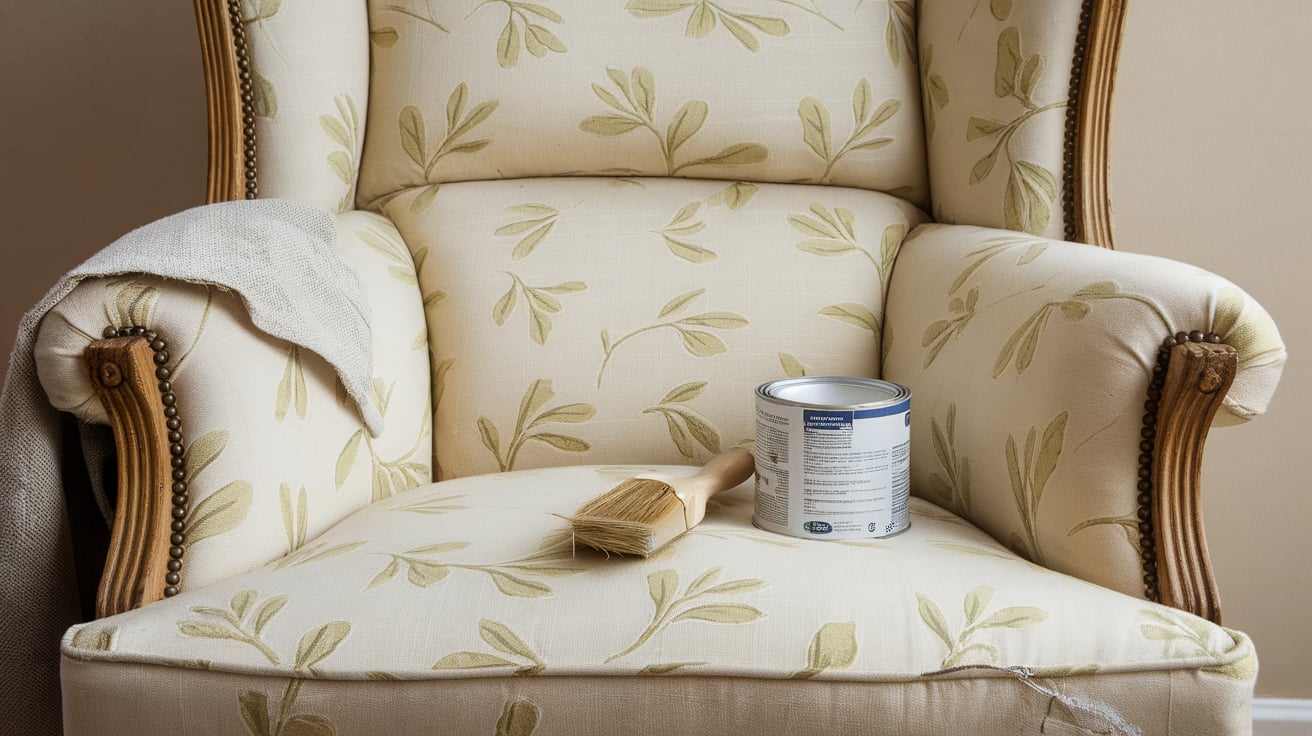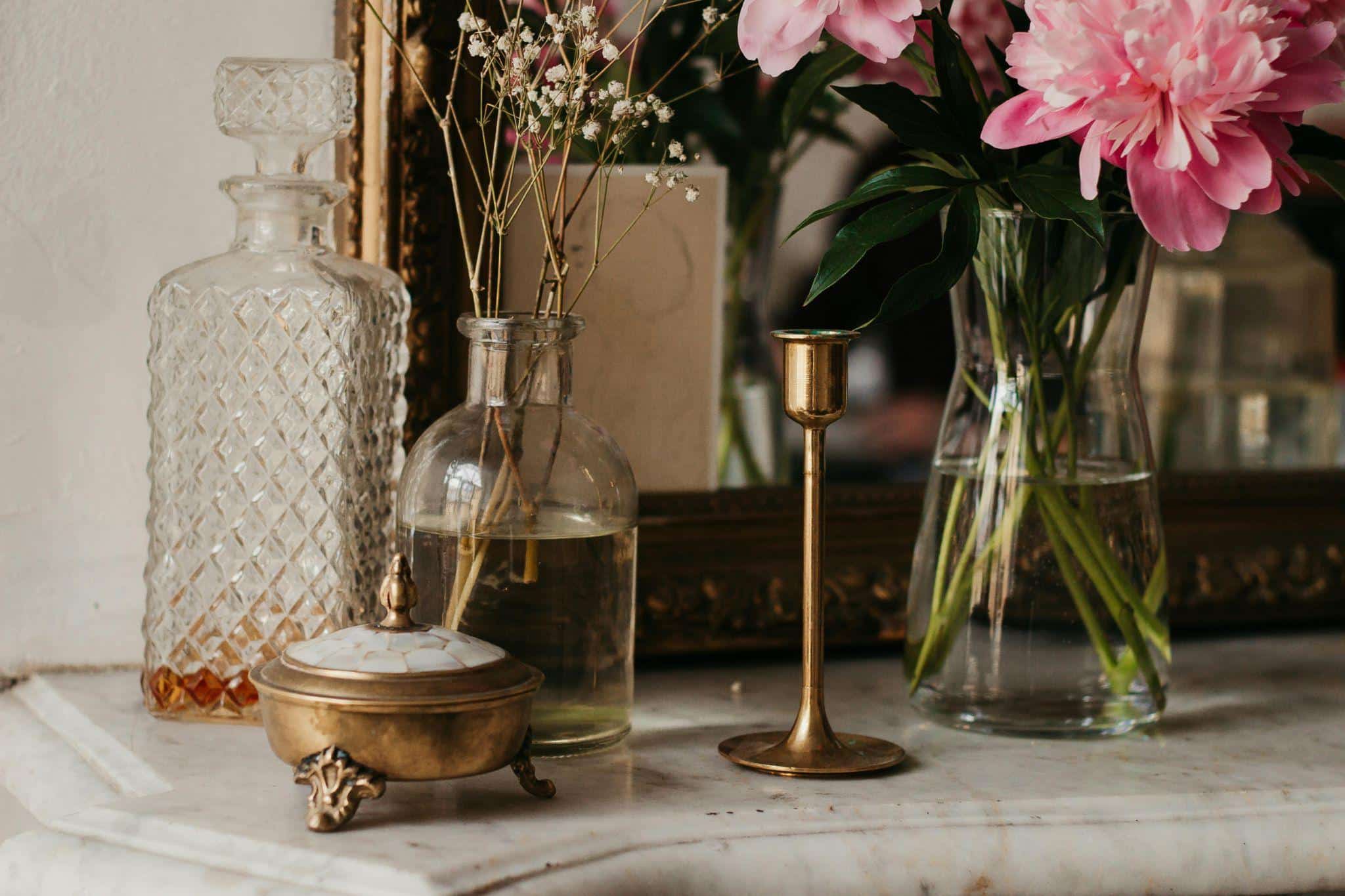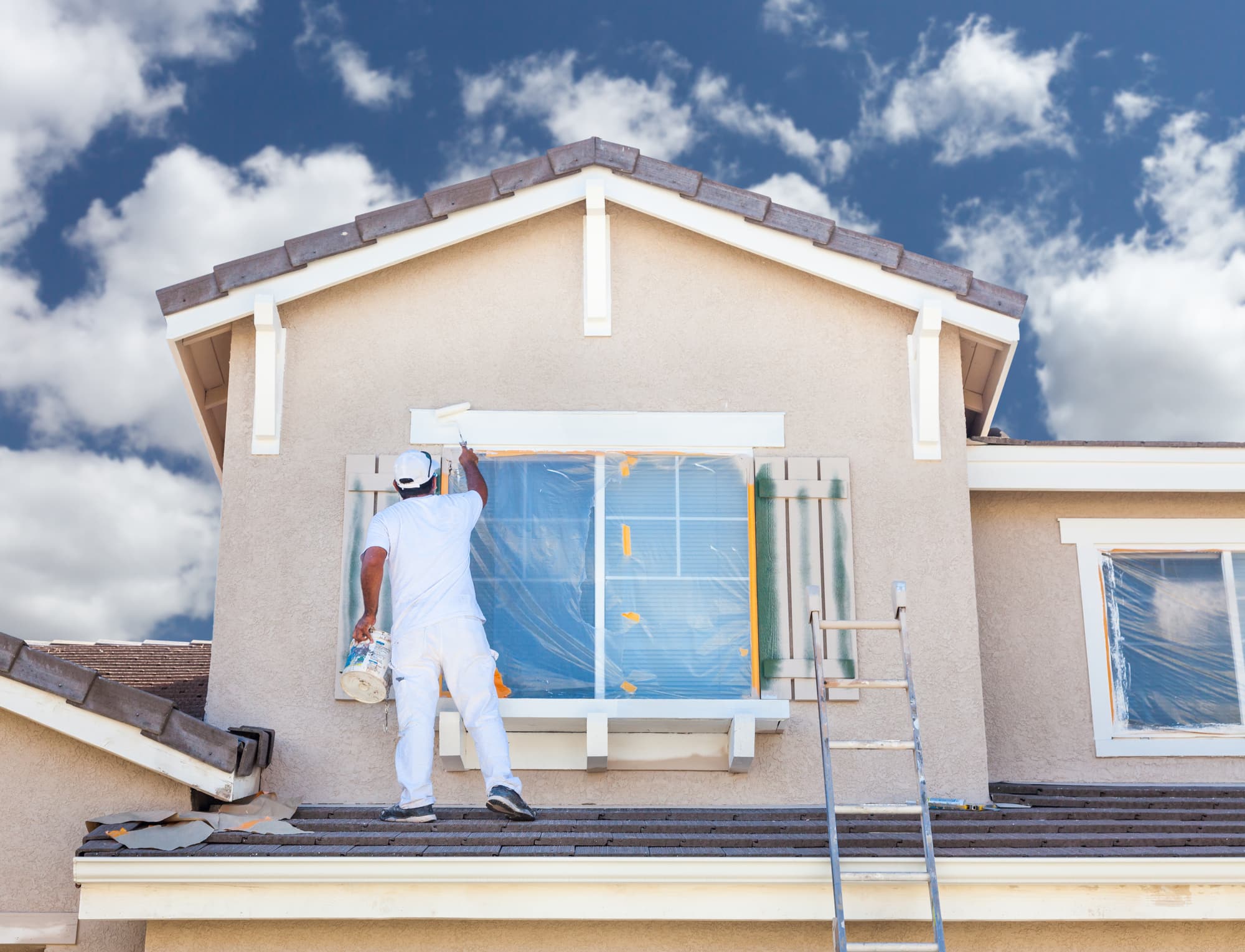Best Fabric Paint for Upholstery Under Budget
Are you staring at your old couch, wishing it looked different? I get it.
I’ve spent years testing different fabric paints on furniture, and I know how hard it is to find one that works.
Most paints crack, fade, or make the fabric feel stiff and scratchy.
But here’s the good news – I’ve found paints that can make your furniture look fresh without ruining the fabric’s feel.
In this post, I’ll share the best fabric paints I’ve tested for upholstery. You’ll learn which ones last longest, feel softest, and give the best coverage.
Let’s make your old furniture feel new again with the right fabric paint.
An Overview of Fabric Paints
When I first started working with fabric paint, I learned it’s not like regular craft paint. It’s a special mix made to stick to cloth without getting stiff or peeling off when you sit down.
Types of Fabric Paint for Upholstery
- Permanent Fabric Paint: These paints sink right into the fabric fibers. I use these most often because they stay soft and won’t wash away. Plus, they keep your couch feeling like a couch, not like dried paint.
- Spray Fabric Paint: I find these perfect for large areas. They go on thin and even, which helps keep the fabric’s natural texture. But watch out – you’ll need good air flow when using these.
- Acrylic Fabric Paint: These are thicker and work well for detailed designs. I’ve found they’re great for chairs that don’t get sat on much, like dining room seats.
- Natural Fabric Paint: Made from plant-based stuff, these are safer to use indoors. They might need more coats, but I like them when I’m working in spaces with kids or pets.
Top Fabric Paints for Upholstery
1. Fabricoat Fabric Paint
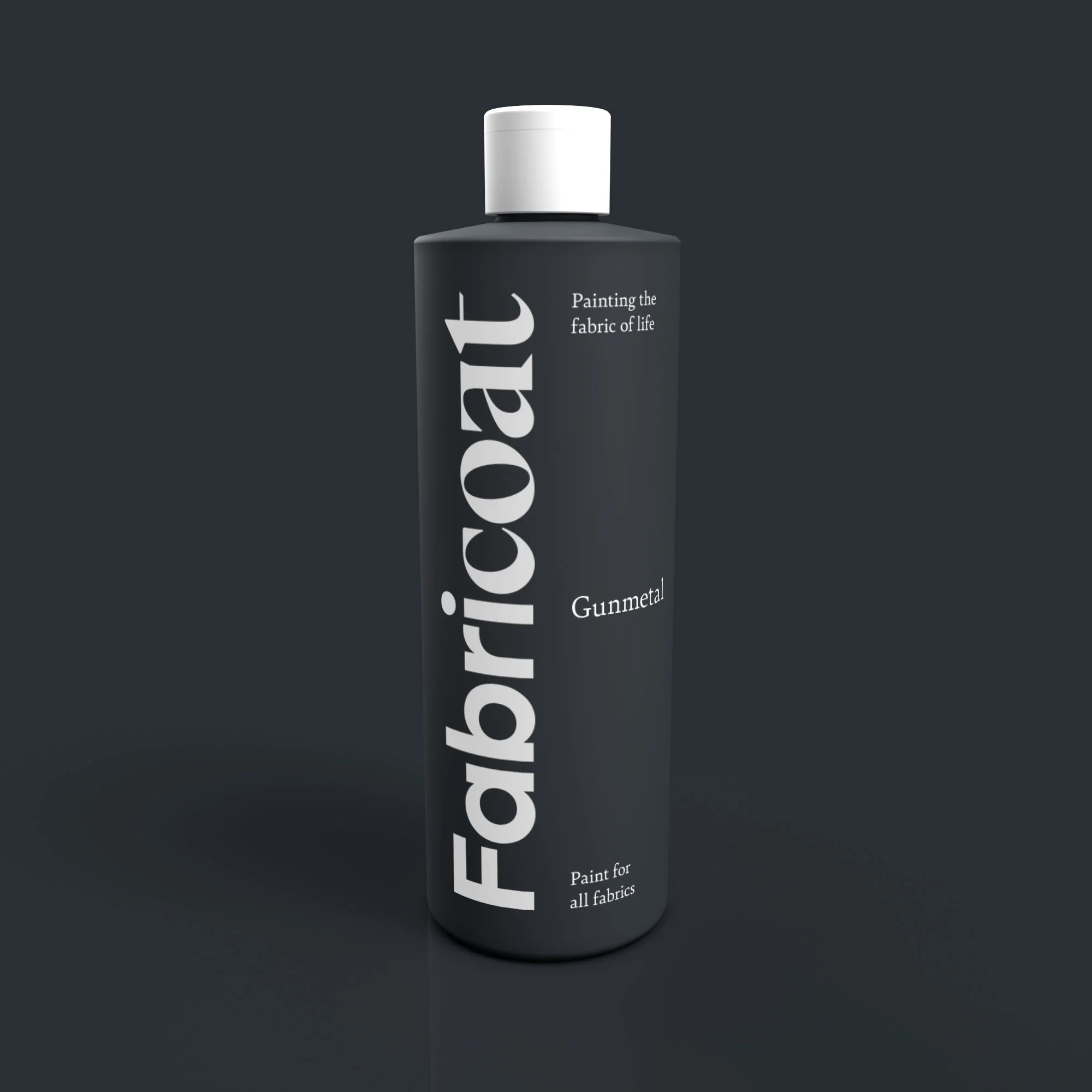
I’ve used this paint on my own furniture, and it flows well into the fabric. The paint stays flexible after it dries, which keeps your sofa comfy.
It works best on cotton and polyester blends. I noticed it takes two thin coats to get full coverage, but the end result lasts for years.
This paint meets low-VOC standards, making it safe for indoor use.
2. Annie Sloan Chalk Paint

This paint bonds well with natural fibers and wears nicely over time. I find it perfect for antique chairs and sofas because it gives a soft, matte finish.
The paint needs a special wax coating to last longer. It’s made with water-based materials and comes in recyclable containers.
Each container covers about 150 square feet.
3. Tulip Soft Fabric Paint
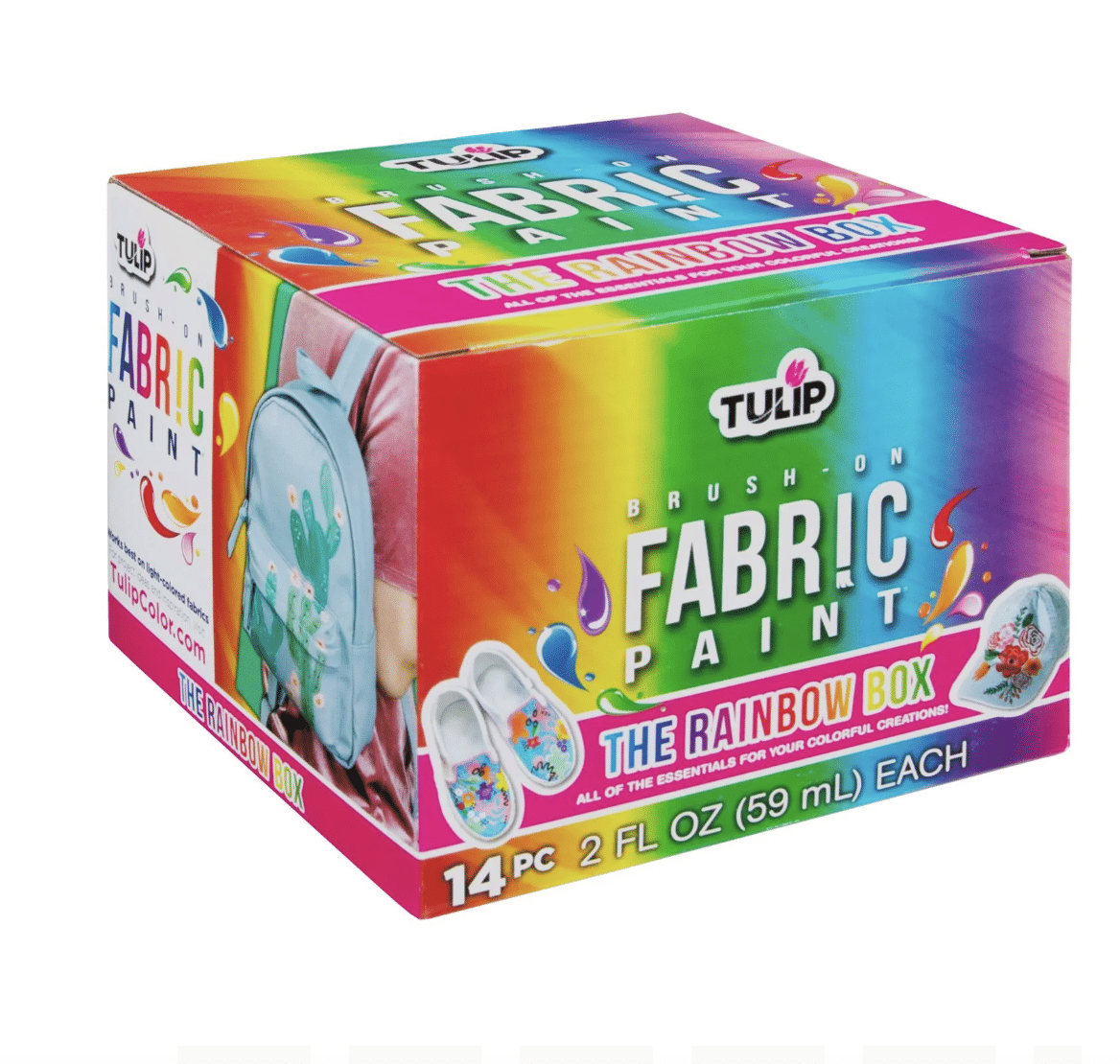
From my testing, this paint stays smooth and doesn’t crack when the fabric moves. It works well for both big and small projects.
The paint needs a heat setting with an iron to last. The company makes its paints with non-toxic materials.
They offer refill options to reduce plastic waste.
4. Dixie Belle Chalk Mineral Paint

This paint gives great coverage on most fabrics. I like using it on outdoor furniture because it stands up to the weather well. The paint dries fast and needs no prep work.
They make their products in small batches to reduce waste. The paint comes from natural minerals.
5. Jacquard Fabric Paint
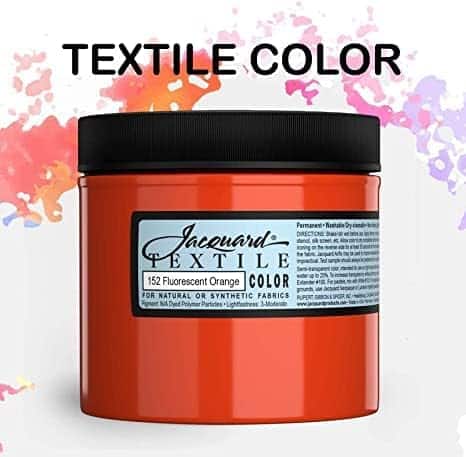
The paint feels light and keeps the fabric’s texture intact. I’ve found it works best on light-colored fabrics. You can thin it with water if you want a lighter color.
The company uses solar power in its factory. They make their packaging from post-consumer materials.
Comparison Table of Top Fabric Paints
| Fabric Paint | Cost | Coverage | Drying Time | Pros | Cons | Rating |
|---|---|---|---|---|---|---|
| Fabricoat Fabric Paint | $24 per 16 oz | 125 sq ft | 4 hours | – No priming needed – Stays soft on fabric – Good for large areas |
– Needs two coats – Only comes in basic colors |
4.5/5 |
| Annie Sloan Chalk Paint | $38 per 32 oz | 150 sq ft | 1 hour | – Fast drying – Rich color options – Strong bond with fabric |
– Needs wax finish – Higher price point |
4.3/5 |
| Tulip Soft Fabric Paint | $15 per 8 oz | 80 sq ft | 2 hours | – Easy to apply – Smooth finish – Budget-friendly |
– Needs heat setting – Small bottle size |
4.2/5 |
| Dixie Belle Chalk Mineral Paint | $30 per 16 oz | 100 sq ft | 2 hours | – Good for outdoors – No sealing needed – Quick drying |
– Limited color range – Can feel thick |
4.4/5 |
| Jacquard Fabric Paint | $18 per 8 oz | 75 sq ft | 3 hours | – Light texture – Can mix colors – Good for details |
– Small coverage area – Multiple coats needed |
4.1/5 |
Factors Affecting Paint Selection
- Fabric Type: I always check first what my furniture is made of. Cotton takes paint well and needs less prep. Synthetic fabrics like polyester need special preparation. Velvet and silk are tricky – they need very thin paint layers to keep their feel.
- Color of Your Fabric: The base color matters a lot. Light paints won’t cover dark fabrics well – I learned this the hard way. Dark blue or black furniture needs many coats of light paint. Light-colored furniture works with most paint colors.
- Usage of Furniture: How often you use the piece counts. My living room sofa needed tougher paint than my guest room chair. High-traffic seats need flexible paint that won’t crack. Less-used pieces can handle most paint types.
- Indoor vs Outdoor: Indoor furniture needs low-odor paint that’s safe to breathe around. I make sure outdoor pieces get paint with UV protection. Weather-proof paints cost more but last longer outside.
- Budget Planning: Paint prices add up fast. Big pieces need more paint – my three-seater sofa took two containers. Better paints cost more but need fewer coats. Cheaper paints might need extra coats or touch-ups later.
- Surface Texture: Smooth fabrics take paint differently than rough ones. I use thin paint on smooth fabrics to keep the texture. Rough fabrics can handle thicker paint without looking odd.
- Cleaning Needs: Some paints wash better than others. If kids or pets use the furniture, pick washable paint. Some paints need special cleaners – I note this before buying.
How to Prepare Your Upholstery for Painting

1. Clean the Fabric
Start by vacuuming every inch of the fabric. I use a brush attachment to get deep into the weave. Next, mix mild soap with warm water. Test this mix on a hidden spot first. Wipe the whole surface with a clean, damp cloth. Let it dry fully – I wait 24 hours to be safe.
2. Test the Paint
Before going all in, I test the paint on a hidden area. Put a small amount under a cushion or on the back. Wait for it to dry and check how it looks and feels. This step has saved me from many mistakes.
3. Fix Any Issues
Look for loose threads or tears in the fabric. Trim hanging threads with scissors. Patch any holes or tears. Small fixes now prevent bigger problems later. Make sure all repairs are dry before painting.
Protect the Area I lay drop cloths on the floor around the furniture. Cover nearby items with plastic sheets. Tape off any wood or metal parts you don’t want painted. Remove cushions and paint them separately.
4. Check the Weather
Humidity affects how paint dries. I paint on dry days with low humidity. Open windows for good airflow. If it’s too humid, use fans to help move the air. Good airflow helps the paint dry evenly.
Gather Your Tools You’ll need:
- Clean cloths
- Spray bottle with water
- Paint brushes (soft bristle)
- Small foam rollers
- Mixing container
- Measuring tape
- Sandpaper (very fine grit)
Step-by-Step Guide for Painting Upholstery
Tools & Materials Required
- Spray bottle
- Soft bristle brushes
- Sanding sponge
- Drop cloths
- Clean cloths
- Paint measuring cups
- Chalk for marking
- E6000 glue (if adding decorative elements)
- Paint of choice
- Clean water
- Protective gloves
- Fine-grit sandpaper
- Clear sealant (optional)
Stepwise Process for Painting
1. Mix the Paint
- Combine 3 parts water with 1 part paint
- Stir until well blended
- Test the mix on a hidden spot
2. Prepare the Surface
- Spray the fabric with clean water
- Work in small sections
- Keep the fabric damp but not soaked
3. First Coat Application
- Use a soft brush to work the paint into fibers
- Keep strokes even and light
- Use a sanding sponge while the paint is wet
- Make sure the paint soaks in, not sits on top
4. Between Coats
- Let each layer dry fully
- Sand gently between coats
- Remove any dust before the next coat
5. Additional Coats
- Apply 3-4 thin coats total
- Keep fabric slightly damp
- Work paint in circular motions
- Check coverage after each coat
6. Final Steps
- Let dry completely (24 hours)
- Apply clear sealant if desired
- Test the finish by touching
- Check for even color
An Overall Cost Required for Painting
| Category | Item | Cost Range |
|---|---|---|
| Basic Paint Supplies | Starter set of fabric paint (per quart) | $20-35 |
| Paint for a three-seater sofa | ~$45 | |
| Additional for touch-ups | Varies | |
| Essential Tools | Spray bottle | $3-5 |
| Paint brushes | $8-15 | |
| Sanding sponges | $5-10 | |
| Drop cloths | $10 | |
| Clean cloths | $5 | |
| Total tools cost | $31-45 | |
| Optional Items | Clear sealant | $15-20 |
| Fine sandpaper | $5 | |
| Protective gloves | $5-8 | |
| Paint measuring cups | $4-6 | |
| Total optional items | $29-39 | |
| Project Costs by Furniture Size | Small chair | $50-75 |
| Love seat | $85-120 | |
| Full sofa | $120-160 | |
| Dining chairs (set of 4) | $90-130 |
How to Maintain Your Painted Upholstery
- Daily Care: I keep a soft brush handy for light cleaning. Dust the surface once a week. Pat spills right away with a clean, dry cloth. Don’t rub – this can damage the paint. Keep pets from scratching the painted areas.
- Cleaning Methods: Use a mix of mild soap and cool water. Test cleaners on a hidden spot first. Blot stains gently – no hard scrubbing. Let cleaned spots air dry fully. Never use bleach or strong cleaners.
- Vacuum Tips: I vacuum with a brush attachment only. Keep the suction low to protect the paint. Go with the fabric grain, not against it. Clean the vacuum head before use. Skip beater bars – they’re too rough.
- Sunlight Protection: Keep painted furniture away from direct sun. Use curtains during peak sunlight. Move pieces around to prevent fading. Sun can make paint crack faster. Consider UV-blocking window film.
- Seasonal Care: Check for wear every few months. Fix small issues before they grow. Clean more often in high-use seasons. Add extra protection during humid months. Keep indoor heating away from painted surfaces.
- Spot Touch-Ups: Keep leftover paint for fixes—clean spots before touching up. Use thin paint layers. Let touch-ups dry fully. Keep your paint mix recipe handy.
Prevention Tips
- Use arm covers on well-used spots
- Put pads under heavy items
- Keep food and drinks away
- Tell guests about the painted surface
- Watch for signs of wear

Conclusion
You’re now ready to start your furniture painting project! I’ve shared everything I learned from testing different paints and methods.
Remember to pick the right paint for your fabric type and take time with the preparation steps.
Think about your needs – how often you’ll use the furniture, your budget, and the look you want because good paint might cost more upfront but saves money over time.
Want more furniture tips? Check out my guide on choosing the best fabric for different furniture types. Or leave a comment below about your painting projects – I’d love to hear what worked for you!

